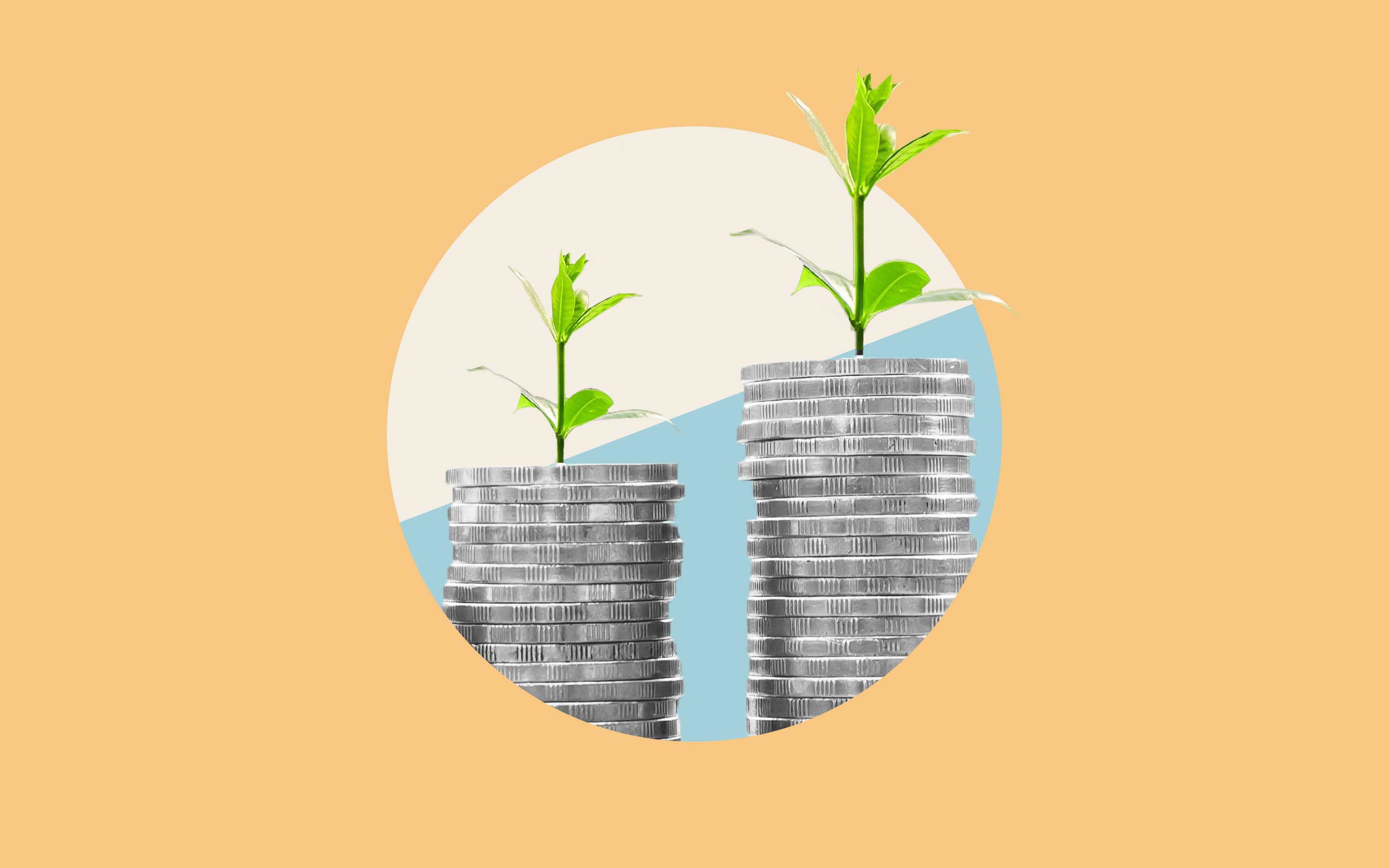Do you want to invest in projects and innovations that are building the smart, green economy of the future?
Then you need to know about green bonds!
Green bonds have become increasingly popular over the last few years. In fact, since their creation in 2007, the average annual growth rate has been over 90%.
Sounds amazing, right? But you probably have some questions. What are green bonds? How are they different from conventional bonds? How do I know it isn’t greenwashing? And, why are they in my Inyova investment strategy but not my friend’s?
Let’s take a closer look!
So, what are green bonds?
Green bonds are created to raise the funds needed to kick-start climate change solutions. These range from emission reduction projects to pollution prevention to renewable energy programmes to developing innovations that make buildings and cities more green.
And don’t worry: this isn’t charity. We design your impact investment to generate impact and returns in the long run.
The first green bonds were issued in 2007 and they have quickly become an important tool in the fight against climate change, especially in funding large infrastructure projects – where a lot of investment is needed.
What are the similarities and differences between conventional bonds and green bonds?
Like conventional bonds, green bonds are issued by governments, banks, or large corporations. But unlike conventional bonds, green bonds can only be issued and used according to specific guidelines or ‘green goals’.
This means that the money you invest into green bonds can only be used to fund specific green projects that have a positive environmental impact.
Importantly, green bonds are still issued by governments, banks, and large corporations. This means that green bonds and conventional bonds have a similar risk profile when issued by the same entity. And based on historical data, you can expect to receive a long-term financial return (as with any investment, history does not guarantee future returns).
What do green bond projects look like?
You may be wondering what a green project actually means and what it could look like.
Here are some concrete examples of green bond projects that are included in the Inyova universe. This means you can invest and help make them happen!
Setting up sustainable infrastructure in the Global South
The European Investment Bank (EIB) will use money from green bonds to build up the infrastructure necessary for sustainable development in Europe and around the world. These include:
- low carbon energy generation projects in Guinea and Madagascar
- improving access to electricity in Nicaragua
Building smart cities
E.ON SE is an international energy network with a large focus on renewable energy solutions. It is using green bonds to:
- build electric vehicle charging stations and renewable energy storage units;
- increase energy efficiency through efficient street lighting, smart meters, and sustainable city energy solutions.
Making trains an attractive alternative to flying
Eurofima is a collaboration between 25 countries to support the development of railway passenger transportation in Europe. The green bond will:
- generate funds to acquire or maintain 983 trains for regional and long-distance transportation in Switzerland, Italy, Spain, Belgium and Luxembourg.
How do I know green bonds aren’t just greenwashing?
Strict rules and guidelines are in place to make sure green bonds are used to work towards specific sustainability goals. These guidelines are called the Green Bond Principles.
The principles are made up of four components. These have to be clear-cut, transparent and documented.
The four principles are:
Use of Proceeds – This is what a company or government promises to do with the funds raised by the bond: before issuing the bond, they must state what the money will finance.
-
- As an example, E.ON states that the proceeds from its green bond will be used to build charging stations for electric vehicles, as well as renewable storage units. Within the Climate Bonds Initiative (more about that later), there are strict rules in place on the use of proceeds that must be met.
Process for Project Evaluation and Selection – Issuers of green bonds must clearly communicate to investors
-
- the environmental objectives of the green project in question
- the process in which they will meet these objectives
- any potential social and environmental risks associated with the project
Management of Proceeds – The net proceeds of the green bond, or an amount equal to these net proceeds, should be tracked or credited.
Reporting – This includes:
-
- ongoing and readily available reporting on the use of the proceeds
- a list of the green projects
- a brief description of the projects
- the amount of funding needed
- the expected impact
The reporting is also closely monitored and verified by a third party. This is very important.
How are green bonds certified?
There is a rigorous process in place.
Green bonds are certified in many ways including a certification process, through third-party opinions, verification and ratings.
Green bonds receive final certification under the Climate Bonds Standard. Bonds that conform to this standard are declared Climate Certified Bonds by an approved board.
How do they measure sustainable and green impact?
Within this standard, there are, among others, scientific criteria that match the 1.5ºC target set out by the 2015 Paris Agreement.
This is to make sure that the bonds are used to finance green projects with positive, impactful environmental goals – like climate change mitigation, climate change adaptation, natural resource conservation, biodiversity conservation, and pollution prevention and control.
Not only does this have to be demonstrated, but the certification process also includes rigorous verification. This means that the funds must be used where they are supposed to be used, and this will be checked.
Are green bonds part of every impact investing strategy?
The number of green bonds in your Inyova portfolio is based on your risk profile.
Generally speaking, bonds are less risky than stocks, as they tend to be less volatile and are more stable (think: less up and down movements on a day-to-day basis). Not only do green bonds allow you to directly fund great and impactful green projects, but they also help maintain a steady balance in your portfolio’s performance.
Your investment risk is also managed through modern portfolio theory and diversification. To minimise your risk exposure further, the bond part of your portfolio is also diversified. To do this, we use an ETF consisting only of Climate Bond Initiative certified green bonds. This means that when you invest in green bonds through Inyova, you are investing in hundreds of green bonds spread across different industries, countries, and company sizes, along with other dimensions.
Sounds great, how do I get started?
Are you eager to see how green bonds can help make a positive impact and to get your own responsible returns? Want to know how you can support climate change initiatives and help companies solve the big global challenges of our time?
We are happy to help, and getting started is easy! Follow this link to get your free, non-binding impact investing strategy today.
Use our easy online tool to create a personalised investment strategy based on your personal values and interests. These can range from renewable energy, electromobility and technology to human rights and zero emissions. Your 100% obligation-free strategy will also be designed to achieve market-rate returns.



